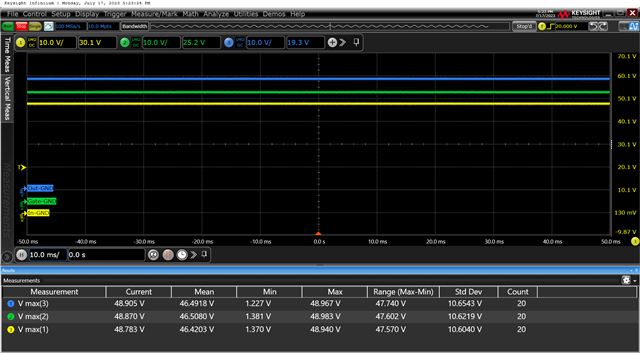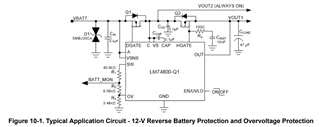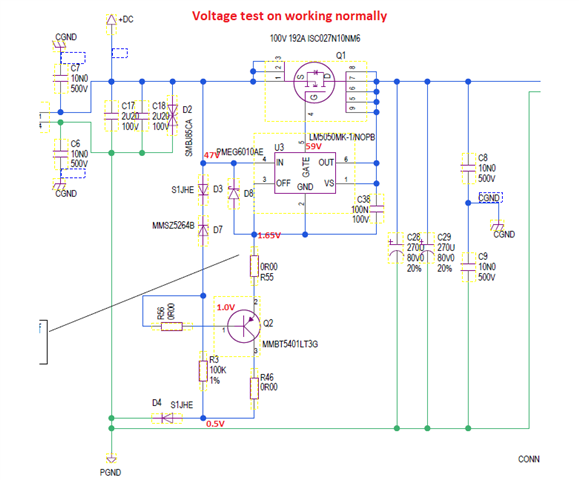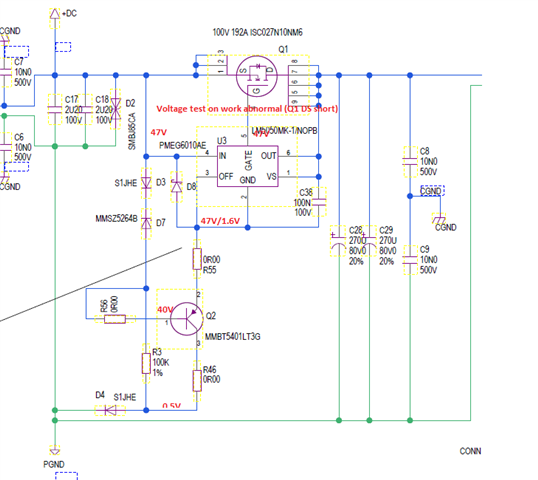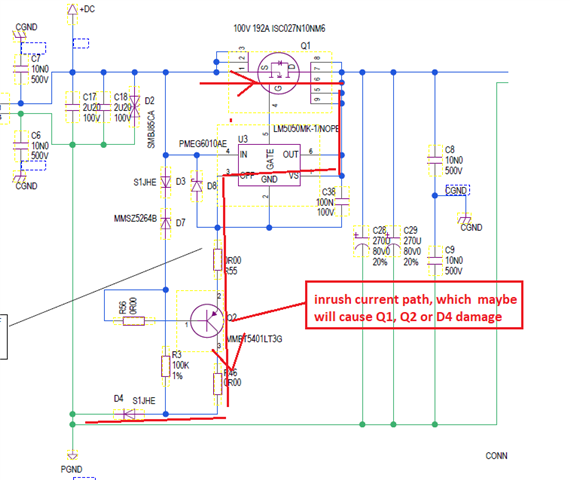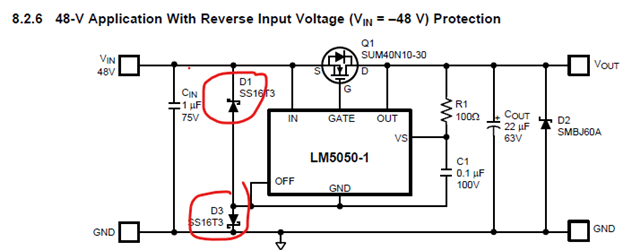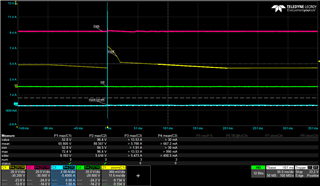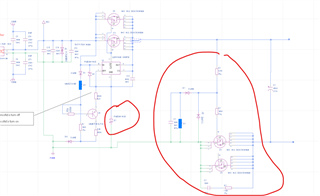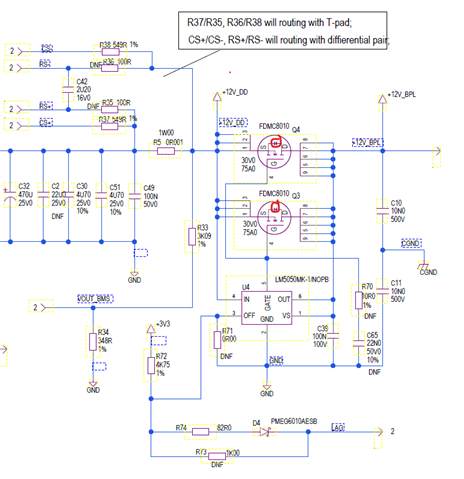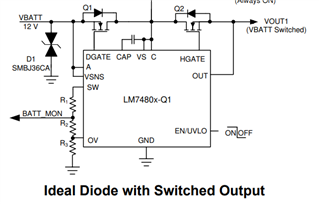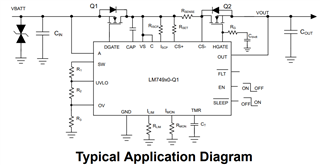Other Parts Discussed in Thread: LM7480-Q1, LM74910-Q1
Hi TI expert,
We are using LM5050-1 on our PSU's input reverse polarity protection and find some damage after surge test.
Their schematic is as below.
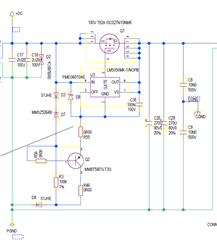
The surge voltage is negative, ~ 1000V from input side as below figure.

we found Q1's DS are short, D7/D8 are also damaged, which will make input (IN vs GND) are short and very big big dangerous current, could you please help to review if the schematic has some problem and give some advice to solve this surge test damage.
Thank you!
Best regards,
Bruce


